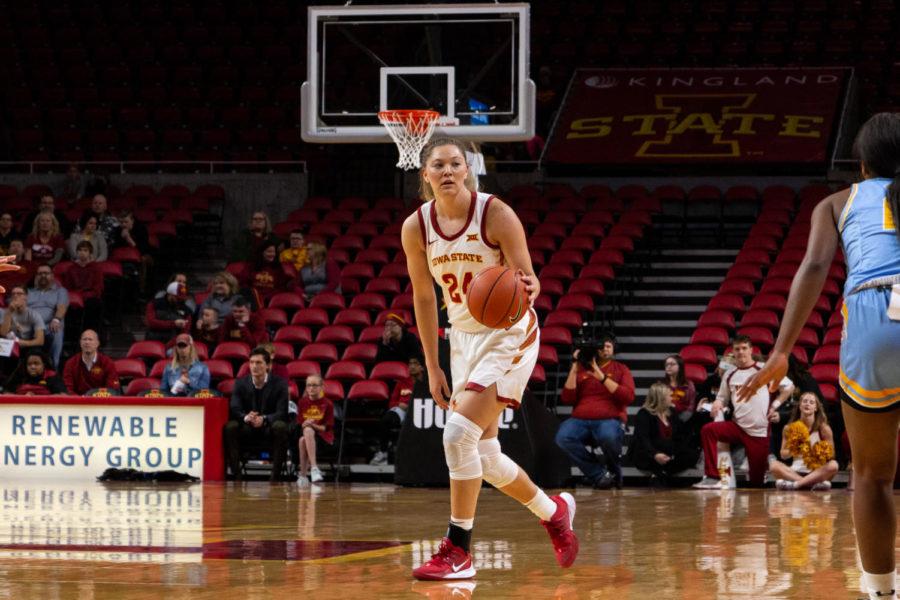Iowa State takes on Texas Southern with early season shooting struggles
Iowa State guard/forward Ashley Joens reads the court against the Texas Southern women’s basketball team at their game Nov. 7 at Hilton Coliseum. The Cyclones won 79-59.
November 18, 2019
Iowa State continues its non-conference slate against Texas Southern at 11 a.m. on Tuesday.
Texas Southern may not come across as a team that could challenge the Cyclones, but due to their recent game against Oregon and stellar play from Ciani Cryor, Texas Southern could give the Cyclones fits.
Through two games this season, Texas Southern has a 1-1 record with their loss coming on the road to No. 1 Oregon 99-63.
Oregon has 27 first place votes in the AP Top 25 while the next closest team, No. 2 Baylor, has only three.
Behind Texas Southern’s offense is guard Ciani Cryor, who has averaged 24 points, 6.5 assists and 4.5 rebounds through two games.
Meanwhile, the Cyclones are coming off of a 86-81 loss against Drake on Nov. 10.
During the game, Iowa State was led in scoring by Kristin Scott and Ashley Joens. Scott had 22 points and Joens had 18.
The Cyclones can score points and have been averaging about 75 a game, but the Cyclones have been struggling to convert from three, which is an area they struggled early last season as well.
On overall shots, the Cyclones are shooting 49.1 percent, but on three point attempts that average drops to 29.8 percent.
Scott is the team’s best three-point shooter and has converted four of her seven shots. Joens, who was one of the Cyclones’ best spot-up shooters last season has only made 3-10 and Maggie Espenmiller-McGraw, a five-star combo guard in her first season with the Cyclones, is 1-8 from three.
While not a handicap at this point in the season, Iowa State could have issues if the inconsistent shooting continues.
For the Cyclones last year, the team had inconsistent shooting until the Big 12 regular season started. At that point, Iowa State’s shooting percentages started to be in the 30 percent to 40 percent range rather than the 20 percent to low-30 percent range of the non-conference schedule.







